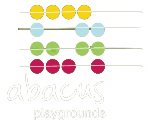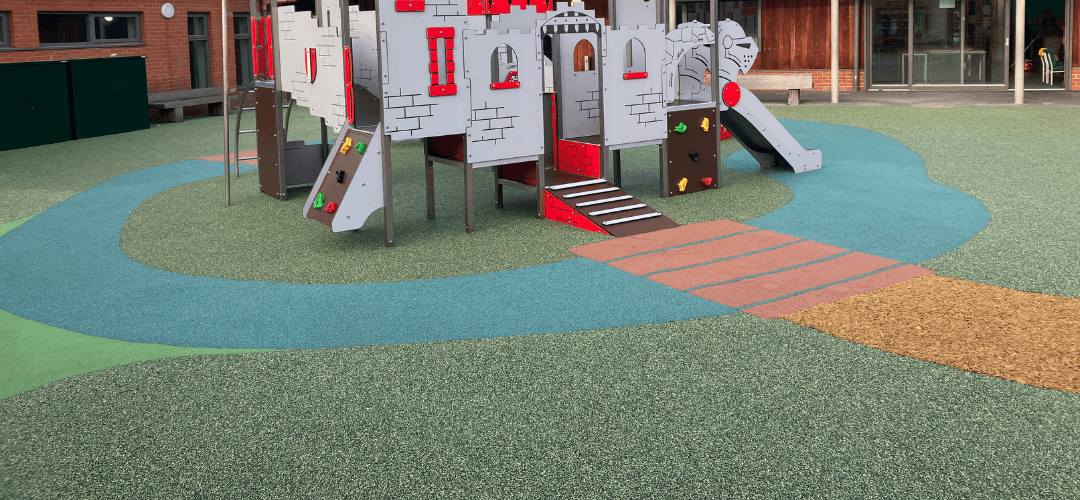For every headteacher, the school grounds are more than a backdrop to the classroom. They are vital spaces for play, exercise, social interaction, and outdoor learning. While equipment and facilities often take the spotlight, the surfacing beneath them is what underpins safety, accessibility, and long-term value.
In schools across the UK, safety surfacing has become a non-negotiable element of playground and outdoor space design. Not only does it protect children from injury, but it also supports well-being, inclusivity, and compliance with safety standards. For decision-makers responsible for pupil welfare and budgets, understanding the benefits of safety surfacing is key to creating playgrounds that genuinely enrich education.
This blog explains why safety surfacing is essential for schools and outlines the top benefits every headteacher should be aware of when planning or upgrading outdoor spaces.
1. Meeting Safety Standards for Falls
Playgrounds are designed to challenge children physically and mentally, but with that comes the risk of falls. According to BS EN 1177 standards, surfacing beneath play equipment must be impact-absorbing and tested for specific critical fall heights.
Without compliant surfacing, children face a higher risk of injury from slips, trips, or falls from climbing frames and play towers. Safety surfacing such as wetpour rubber or rubber mulch reduces this risk by absorbing impact and cushioning landings.
For headteachers, ensuring surfacing meets safety requirements provides peace of mind and demonstrates a commitment to safeguarding pupils at all times.
2. Encouraging Active Play and Exercise
Physical activity is a cornerstone of child development, yet research shows that many children in the UK are not reaching recommended levels of daily exercise. Playgrounds are an ideal place to encourage active play, from running and jumping to balancing and climbing.
Safety surfacing allows this freedom of movement by creating a stable, non-slip foundation. Whether through brightly coloured wetpour with activity markings or artificial grass for sports and games, surfacing can actively encourage more activity during breaktimes.
By investing in quality surfacing, schools can better support national initiatives such as the Daily Mile and the Department for Education’s emphasis on improving physical health.
3. Supporting Inclusive Play
A truly successful school playground is one where every child, regardless of ability, can take part. Traditional hard surfaces like tarmac create barriers for wheelchair users or children with mobility challenges.
Modern safety surfacing offers smooth, level finishes that are fully accessible. Wetpour is particularly effective, as it allows wheelchair users to access equipment and move freely around the play area. Rubber mulch also provides stable ground while blending naturally with outdoor surroundings.
Headteachers seeking to promote inclusivity will find that surfacing plays a central role in creating environments that encourage all children to participate, learn, and socialise together.
4. Creating Attractive and Inspiring Spaces
Children are naturally drawn to bright, engaging environments. The look of a playground influences how pupils use it, whether it sparks imaginative play, structured games, or exploration.
Wetpour surfacing allows for customised colours and designs, from hopscotch grids to number trails and alphabet games. Or just using colours to zone play areas. Artificial grass offers year-round greenery, transforming tired outdoor areas into welcoming spaces.
For schools, these visual enhancements are more than decoration. They help embed learning into play, encourage social interaction, and even make a positive impression on visiting parents and inspectors.
5. Reducing Long-Term Maintenance Costs
School budgets are often tight, and recurring maintenance costs can place a strain on resources. Traditional surfaces such as bark or tarmac wear down quickly, becoming unsafe and costly to repair.
In contrast, safety surfacing options such as wetpour and resin-bound gravel are designed for durability. They withstand heavy daily use, weather extremes, and repeated impact without constant attention.
With professional installation and simple upkeep (such as occasional cleaning), surfacing can remain safe and attractive for years, representing excellent long-term value for schools.
6. Managing Weather and Drainage
British weather can be a challenge for outdoor play. Puddles, mud, and ice create hazards that discourage children from using the playground. Safety surfacing solutions are designed with this in mind.
- Wetpour and rubber mulch are porous, allowing rainwater to drain through rather than pool on the surface.
- Artificial grass prevents muddy patches and remains usable in all seasons.
- SUDS Bond paving helps manage rainwater sustainably, reducing the risk of flooding on school grounds.
By improving drainage and weather resistance, schools ensure pupils can enjoy outdoor activity throughout the year, not only on dry days.
7. Boosting School Reputation
Playgrounds are often the first thing parents and visitors see when they enter a school. An attractive, safe, and well-maintained outdoor space reflects positively on the school’s wider ethos.
Headteachers who invest in safety surfacing demonstrate a clear commitment to pupil welfare, inclusivity, and providing the best possible facilities. This can strengthen the school’s reputation within the community and support positive outcomes during Ofsted inspections, where health and safety measures are closely scrutinised.
8. Versatility Across the School Grounds
Safety surfacing is not limited to play zones. Schools are increasingly using specialist materials across their wider grounds to improve accessibility and aesthetics. Examples include:
- Resin bound gravel for pathways and entrances.
- Artificial grass for quiet reading corners or sensory gardens.
- Rubber mulch for nature trails and woodland areas.
- Wetpour for multi-use games areas and fitness trails.
This versatility means schools can create a variety of safe and engaging outdoor spaces tailored to different needs, from EYFS zones to sports areas.
9. Supporting Outdoor Learning
Outdoor learning is becoming more integrated into the curriculum, particularly at EYFS and primary levels. With safe, reliable surfacing, teachers can take lessons outside without worrying about slips, trips, or unsuitable conditions.
Surfaces with educational markings, numbers, letters, or maps can be used for structured learning activities, while softer areas like artificial grass create inviting spaces for group work and storytelling.
For headteachers, investing in surfacing is also an investment in supporting teaching methods that extend beyond the classroom.
10. Peace of Mind for Staff and Parents
Finally, safety surfacing provides reassurance to both staff and parents. Knowing that children are protected by compliant, durable surfaces allows teachers to focus on supervising play rather than managing avoidable accidents. Parents also appreciate the visible commitment to safety, reinforcing trust in the school’s leadership.
Partnering with Experts
With so many materials available, choosing the right surfacing can feel daunting. Partnering with a professional surfacing company ensures schools receive tailored advice, expert installation, and surfaces designed to last.
At Abacus Playgrounds, we provide schools with solutions that balance safety, creativity, and long-term value. Our experienced teams understand the demands of school environments and work with headteachers and councils to deliver playgrounds that truly support pupils’ development.
Safety surfacing is essential for schools because it protects children, supports inclusivity, and creates environments where learning and play thrive. From meeting safety standards to reducing maintenance costs and enhancing reputation, the benefits are wide-reaching and long-lasting.
For headteachers, investing in safety surfacing is not only a matter of compliance but a commitment to creating playgrounds that enrich education and support the well-being of every child.
📞 Contact Abacus Playgrounds today to explore surfacing solutions designed for schools.

